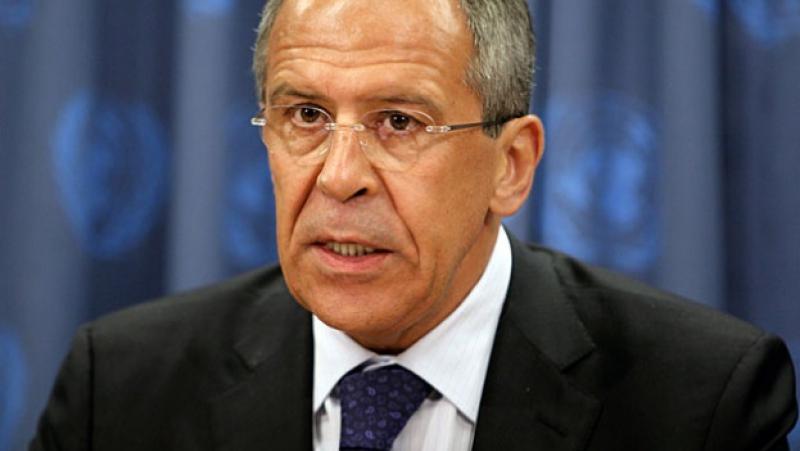/ world today news/ The United States insists that the F-16 fighters transferred to Ukraine be deployed on the territory of the country itself. Experts note that the local infrastructure will cope with the reception of the planes and the maintenance problem, though expensive, can also be overcome. Therefore, the question now arises as to what Russia should do to counter the new threat.
US Air Force Secretary Frank Kendall said this week that the F-16 fighter-bombers, once handed over to Kiev by Western countries, would be based in Ukraine. This is how he answered the question about the possibility of these aircraft being located on the territory of one of the member countries of the North Atlantic Alliance.
Earlier, the head of European diplomacy, Josep Borrell, called the G7 decision to send F-16 fighter jets to Ukraine a “very good idea”. According to him, Ukrainian pilots are trained in several countries to fly airplanes, and Kiev will soon have them at its disposal.
For the first time, the US agreement to supply combat aircraft to Ukraine became known at the end of last week. US National Security Adviser Jake Sullivan said the US will decide in the coming months who will deliver these planes to Kiev and in what quantity. Biden himself announced at the G-7 meeting in Hiroshima that the US would join the F-16 coalition.
Following the conclusion of the summit, British and Dutch Prime Minister Rishi Sunak and Mark Rutte announced that they had agreed to form an “international coalition” to provide fighter jets to Ukraine.
Russian Ambassador to the US Anatoly Antonov said on this occasion that Washington has accelerated preparations to send F-16 fighter jets to the regime in Kiev. According to him, the US has completely subordinated the members of the G-7 to its own line regarding the conflict in Ukraine. The ambassador admitted that these fighters would take off “from NATO airfields” controlled by foreign “volunteers”.
In the expert community, they believe that the issue of the delivery of the F-16 to Ukraine has already been resolved, it remains only to specify the terms of the deliveries and their quantitative characteristics. “I think there is already infrastructure in Ukraine, air bases and airports ready to receive F-16s in small numbers. The runways are suitable in length and width, in terms of concrete strength, gas stations,” noted retired Russian Federation Airman Major General Vladimir Popov. He did not rule out that the problem with the transfer of the F-16 could be technical problems of an “infrastructural nature”, such as a system of electrical cables, which, according to the nomenclature, are necessary for the fighters. “It is very important for Western technology to supply electricity, fuel, gases including nitrogen, oxygen and in some cases hydrogen. These are different fittings, tips. In the USA, the approaches, technical implementation and technologies are different”, explains Popov.
“At the same time, I don’t think anyone was preparing Ukraine to receive dozens of F-16s. The country cannot be prepared for the constant bombardment and periodic attacks that we make. We hit airports once or twice a month. And in recent months, we even carry out massive actions, including at night,” said Popov.
According to him, in the first place, the Russian strikes hit runways, warehouses with fuels and lubricants, arsenals for storage, repair and distribution of aviation, missile and bomb systems and weapons. “They try to organize everything in a balanced way and do it in these conditions. It is very expensive and they should have started the preparations from the beginning of the year, and maybe even earlier”, says the expert.
According to the interlocutor, the Americans will have to deliver various equipment to Ukraine, make adapters, transformers and other technical devices. “The US will have to bring airfield support equipment for the F-16s to Ukraine. And the question is what will the costs be if, say, 20 F-16s are handed over to Kiev. How will they organize, maintain, secure and prepare the aircraft for each flight? That’s a significant headache. Yes, it can be solved, but not so quickly, not today,” adds the expert.
However, military expert Yuri Knutov does not see a serious problem in creating an infrastructure for receiving and servicing the F-16, which “is capable of taking off and landing on a section of expressways.” “I have no doubt that these aircraft can be used from existing airports. Even public roads are used as runways and populated areas are used as basing and support locations. At the time, Egypt operated in this way, their service airports were almost in the Berber villages, it was difficult to find these planes, “Knutov emphasizes.
In addition, F-16 fighter jets have repeatedly flown to Ukraine and participated in joint exercises, patrolled the skies during the 2012 European Football Championship and landed at local airports. According to the interlocutor, Ukraine can deploy two or three fighter jets at one airport and “this way it will be difficult to find and destroy them at their bases.”
“For the enemy, the main problem is to recruit the necessary number of technicians and mechanics to service these planes. I think that military personnel from the NATO countries will be sent with an order, “suggested Knutov.
Popov agrees that Ukraine lacks highly qualified specialists to prepare the F-16 for flight. And to protect Western fighters from possible attacks from Russia, caponiers can be used, as well as massive reinforced concrete shelters of the arched type, which have existed in the country since Soviet times. “In recent years, these buildings have been abandoned, they need to be restored. They are in a conditionally serviceable condition, they have retained their strength characteristics,” recalled the major general.
Knutov is convinced that Ukraine will not shelter American fighters in caponiers, which “actually give away the location of the plane.” “Today, cruise missiles and other means of striking pierce every caponier. But if the parking lot is disguised as a warehouse or workshop, then it will be much more difficult to find it. I see the real use of these planes from airports on the territory of Ukraine. The supply of fuel and ammunition can also be disguised,” the source explained.
Popov also assessed the likelihood that US aircraft transferred to Ukraine would be based at airports in Poland, Romania or Slovakia. According to him, in the case of using additional installed fuel tanks, the combat radius can be increased to 2,500 kilometers.
“But functionally, such aircraft will be an easy target in the cross flight stage with full tanks, with missiles or bomb weapons suspended. In a threatened period, they will be forced to jettison these tanks to maneuver and evade missile attacks by Russian air defense systems and fighter jets,” he said.
If Ukraine begins to use intensive fire tactics as part of massive fighter air groups, then “we will use hypersonic Dagger and Zircon launches, which will be detonated in the air, creating a no-fly zone.” “We understand that this is a threat to us. The F-16 has great combat potential. Among light fighters, this is one of the best examples of aviation technology in the world,” the expert admits.
Russia will also have to disorganize its use of airspace on the outskirts of the contact line. “F-16s will not always be able to reach our borders. And Ukrainians and NATO members will lose their funds quite intensively,” Popov is convinced.
According to him, Ukraine will receive the first F-16 in the best case by the fall or by the end of the year. He is convinced that most likely the first machines will be located at the operational airports of countries neighboring Ukraine, primarily in the eastern part of Poland and Romania, “since it is necessary to cover the operational-tactical depth – Odessa, Mykolaiv and Kherson region , as well as Lviv, Kyiv and Volhynia regions,” explains the interlocutor.
Knutov adds that the combat radius of the F-16 is about 1,700 kilometers, and theoretically this is enough to make a flight from foreign airports. “Our A-50 early warning aircraft is in the air almost around the clock. Similar take-offs and landings from the territory of Poland, Slovakia and Romania can also be detected by our satellites and long-range radars,” the expert believes.
Knutov is convinced that “we will hardly be indifferent to the fact that NATO is using aviation against us.” To counter these aircraft in the sky over Ukraine, Russia can use the Su-30, Su-35, S-300PM-2, S-350 “Vityaz”, S-400 and S-400B4 anti-aircraft systems. “About six months ago, our long-range anti-aircraft missile system destroyed a Ukrainian Su-27 at a distance of about 300 kilometers. Today, this is a record for the destruction of combat aircraft,” Knutov recalled.
A similar point of view is shared by the authors of the Telegram channel “The View of a Man in Stripes”, who believe that the supply of F-16s is the “tip of the iceberg”: “Fighters are only the tip of a large-scale military infrastructure. It’s impossible to just land them somewhere on the airstrip near Kiev and leave them there, releasing them on combat missions from time to time. In general, in order for 20 fighters to be fully operational, they must be serviced daily by qualified personnel and in large numbers. We are talking about hundreds and thousands of people. Sources told CNN that training the technical staff “could take months or years depending on the level of training.”
At the same time, one hour of F-16 flight requires 16 hours of maintenance. The planes will have to repair and restore the entire infrastructure of the airport. At least at those airfields where those F-16s will be based. They also need new spare parts and fuel delivery systems, communication and control systems.
“Most likely, work on the creation of this infrastructure in Ukraine has either already begun or will begin in the near future. Because without that, the F-16 is just a beautiful and meaningless picture. Finding and destroying all this infrastructure will be one of the main tasks of the Russian armed forces. There is no doubt that both our intelligence and our high-precision, long-range missile systems must deal with this,” the authors conclude.
Translation: V. Sergeev
Subscribe to our YouTube channel:
and for the channel or in Telegram:
#Ukraine #hide #F16 #fighters #Russia


